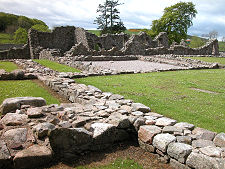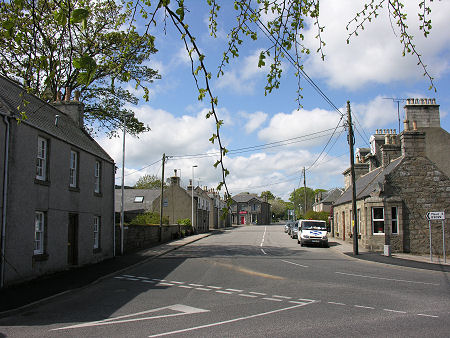 Abbey Street in Old Deer, from the East |
Old Deer is a pretty village on the south bank of the South Ugie Water some 10 miles west of Peterhead. Its broad main street is lined with a mix of properties from different periods, but the overall effect is very harmonious. At its east end, the main street points directly at the imposing tower of Deer Parish Church.
The origins of Deer can be traced back to the arrival here of St Drostan, a follower of St Columba, in the 580s. St Drostan founded a monastery in a loop of the South Ugie Water here, a monastery most famous for its association with the Book of Deer (or Book of Deir). This is an illuminated manuscript produced in the 900s in Latin, with additions in Gaelic, which makes it the earliest example of written Gaelic to have survived.
The Columban monastery seems to have existed only as a folk memory by the time Deer Abbey was founded by William Comyn, the Earl of Buchan, in 1219. The location chosen was a little over half a mile west of the village and on the north side of the river: but it seems likely that Comyn chose Deer for his abbey because the story of the earlier monastery offered a sense of religious continuity stretching back to St Columba's day. Deer Abbey was to thrive for 350 years before everything stopped with the Reformation in 1560. The estates of the abbey subsequently became the property of the Fergusons of Pitfour.
One of the later acts of the Abbey was to divide the parish of Deer into two separate parishes in 1503. The new parish focused on a church established by St Kane in Auchreddie, a settlement six miles to the west, while Deer itself remained the centre of the eastern half of the old parish. Over time, Auchreddie came to be known as New Deer, and the original "Deer" became known as Old Deer. Incidentally, although Old Deer carries an image of a deer on the sign marking the edge of the village, the origin of the name is debatable. In all probability it comes from the Gaelic "doire", meaning "oak grove".
The strongest argument in favour of this origin comes from another name associated with the area, Aikey Brae. This, arguably, is the Scots translation of "oak grove": or of the Gaelic "doire". Today the name Aikey Brae is associated primarily with a stone circle just over a mile west of Old Deer on Parkhouse Hill. Until the latter half of the 1900s Aikey Brae was a name best known for its association with an annual fair held, latterly, on the third Wednesday of July. For centuries the Aikey Brae Fair was the largest cattle and horse fair in northern Scotland, which in the 1700s took place over three days rather than the single day of the more modern event still remembered by older local residents. The fair was held on land on the south side of the South Ugie Water near Bridgend, half a mile west of Old Deer.
As well as its association with a fair and a stone circle, Aikey Brae is also known as the site of a battle which took place near today's Bridgend in 1308, when Robert the Bruce's forces stormed through Buchan in what amounted to a civil war between him and the powerful Comyn family.
Much of what you see today in Old Deer dates back to the last couple of centuries. The Parish Church was built in 1789: though the remains of Old Deer Old Kirk still stand immediately to its east. Most of the buildings on Abbey Street, the main street running through Old Deer, were built in the 1800s, including the Episcopal Church from 1851, the Clydesdale Bank building from 1850, and Aden House from 1891.
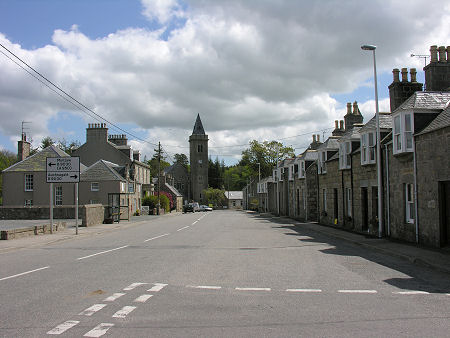 Abbey Street from the West |

|
|
|
Visitor InformationView Location on MapWhat3Words Location: ///echo.meanwhile.training |
 Village Hall |
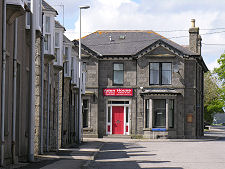 Aden House |
 House in West of Village |
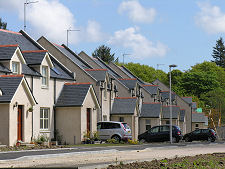 New Houses |



